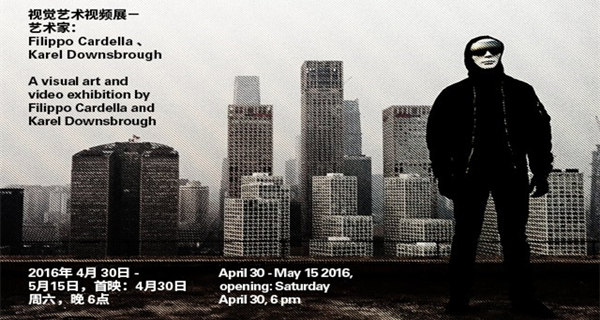
The doldrums are generally defined as a state of inactivity, mild depression, listlessness, or stagnation. This condition, all too familiar to the human soul, is increasingly demonized or – which is even worse – ignored by contemporary societies, where an overdose of sensorial stimuli seems to be the norm. The city, and in particular the megalopolis, seems to be the battering ram of this hectic approach to life while alternatives keep decreasing in number and strength. The time for self-contemplation and self-expression is eroded by ubiquitous technology. New homogeneous devices, like the ever-present iPhone, reduce the expressive potential of each of us to a series of black characters on a bright screen. Even more unsettling is the paradoxical condition of detachment that technology has created in a hyper-connected world where real violence, abuses or catastrophes are often perceived as entertainment.
The urban context in a similar way tends to be omnipresent and extremely homogeneous: the problems that a young city dweller faces in Beijing are very similar to those faced by his New York counterpart. His routine is established by a complex system of infrastructures that all aim to maximize economic production and consumption. He works from Monday to Friday, then on the weekend, he spends the money he earned in the new mall near his house. The city offers very little to the ones who have no money — a phenomenon so evident that the distance one lives from the city center is proportional to the amount of money possessed: upper class elites in the city center, blue collars in the suburbs. In this unavoidable capitalistic environment, to be out of the production process is considered a failure, and is even perceived as sinful or subversive if it is the result of a conscious choice. In this context, being a ruthless white collar worker is often more rewarding than being a lazy good guy. It is clear that the reduction of time and space for any activity out of the capitalistic context produces a condition of alienation. If our lifestyle makes perfect sense from an economic perspective, it is impossible to deny the ‘pre-logic’ side of our mind, and this unbalanced condition creates a constant distress that is tangible in the urban environment.
The video and the artworks featured in this exhibition explore this pre-logic condition and the conflict between the meditative-self and the hyper-controlled and economic functioning city environment. The short video—born from an idea of Filippo Cardella and directed by Karel Downsbrough, with the collaboration of Brin (burbex.org) — follows a solitary vagabond, the Last Man, as he wanders between the glory of a gentrified metropolis and the ruins of a post-atomic Beijing, looking for answers to his own uneasiness towards life. The narrative structure of the video is fragmented like in a bout of compulsive channel hopping, but the focal point is the lonely, faceless Last Man and his intimate journey through the senseless structures of the city. As the journey brings us ever deeper into the mind of our creepy hero, the city background turns increasingly meaningless. An abstract pattern, an irreconcilable rift between the artificial reality of Beijing and the unreasonable subconscious of the last man.
The paintings on canvas by Filippo Cardella are like a frame of the video. The Chinese characters ‘末人‘ are distorted, melted and colored to deceive the original literal meaning and reveal the irrational, unmanageable, unfiltered conscience of the artist. The functional design of the letters, the established visual criteria, are voluntarily broken to reach a different semantic area: dysfunctional, illogical, imponderable and yet capable of resonating into the primordial reminiscence of our distressed city-dweller souls. Like a white noise, the message is unclear, elusive, and unstructured, but still the mind can connect to this psychedelic pattern and enjoy this visual symphony in open contrast to the rigid and gray structure of the city.
“Inner City Doldrums” is a visual art and video exhibition by Filippo Cardella and Karel Downsbrough. These snapshots of times to come will be on display at Meridian Space from April 30 to May 15, with an opening on Saturday April 30, 6pm.
Locations provided by Brin at Burbex.org, the number one provider of Urbex tours in China.
ABOUT THE ARTISTS
FILIPPO CARDELLA
Filippo Cardella is a Beijing-based designer and artist born in the Italian peninsula in the Orwellian year 1984.
In 1998, he bumped into a squat held in an abandoned building of his city. Music, drugs, political stances, old punks and a new generation of ravers coexisted in the same place but what captured his imagination were the ‘pieces’ that writers left on the wall of the old house. Since that day his interest in vandalism has never abandoned him: he studied the movement, he met some of its leading exponents and he developed an original critical analysis of this controversial art form.
Because of his work as a designer he lived all around the world: Buenos Aires, Singapore, New York and finally Beijing. These megalopolises inspired him to develop a series of art projects that explore the complex social behaviors and power dynamics within the rigid grid of the urban landscape.
His latest work at Meridian Space focuses on the conflict between the meditative-self and the hyper-controlled and economic functioning city environment.
KAREL DOWNSBROUGH
Karel Downsbrough (1988, New York) left bustling Manhattan at an early age for the Brussels, the dysfunctional capital of Belgium and Europe. After drifting between the US, Belgium, London and China for university he moved to Beijing where he now works as a freelance videographer.
Date: April 30 - May 15, 2016
Time: 10am-6pm
Email: info@meridian-online.com
Website: http://www.meridian-online.com
Address: C&C Park, No. 77 Meishuguan Houjie, Dongcheng District
Phone: 010-51600496
Source: www.thatsmags.com




